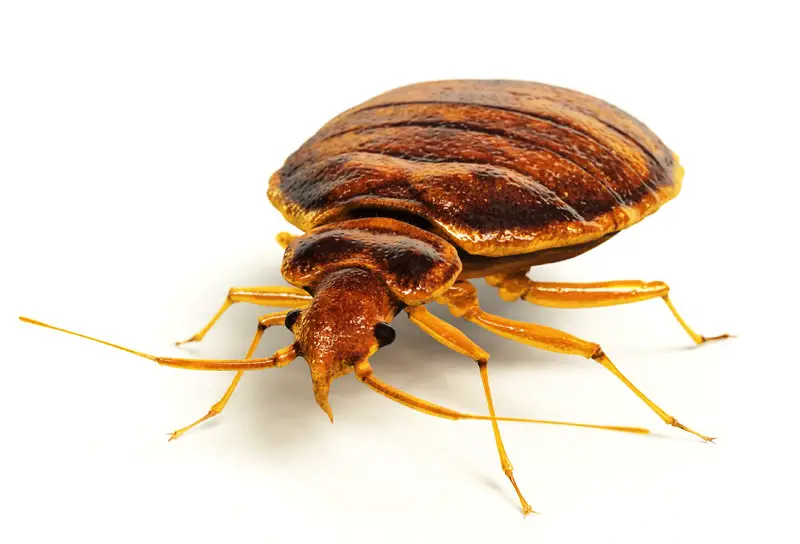It’s not uncommon for residents in Bahrain to encounter the persistent nuisance of bed bugs. These tiny, blood-sucking pests can infest homes, hotels, and even public spaces, causing discomfort and anxiety for those affected. Bed bugs are expert hitchhikers, capable of latching onto luggage, clothing, or furniture, making it easy for them to spread from one place to another. If you find yourself battling these unwelcome intruders, fear not – we’ll provide important input on how to get rid of bed bugs in your home.
Here, we highlight various effective methods and preventive measures to teach you how to get rid of bed bugs and restore peace and comfort to your home in Bahrain. By following these steps, you can regain control over your living space and sleep soundly once again. Keep on reading to learn more.
Bedbugs in Bahrain
Bed bugs have become an increasingly prevalent issue in Bahraini homes in recent years.
The rise in international travel, tourism, and globalization has inadvertently facilitated the spread of these pests across borders.
As a popular destination for business and leisure, Bahrain attracts a constant influx of visitors, which inadvertently introduces bed bugs to hotels, guesthouses, and other accommodation facilities.
Unfortunately, these tiny insects are adept at hitchhiking their way into luggage, clothing, and even used furniture, allowing them to infest homes without the residents’ knowledge.
Furthermore, the close proximity of residential buildings in Bahrain, coupled with the tropical climate, provides an ideal environment for bed bugs to thrive and reproduce rapidly.

The prevalence of bed bugs in Bahraini homes is a significant concern, necessitating proactive measures to combat infestations and protect residents from the discomfort and potential health risks associated with these pests.
What do Bedbugs Look Like?
Bedbugs, the small oval-shaped insects, have adapted to feed on the blood of both animals and humans.

Adult bedbugs possess flat bodies similar in size to that of an apple seed. However, their appearance changes after a blood meal, causing them to swell and take on a reddish color.
Their flattened bodies enable them to squeeze into incredibly tight spaces, as narrow as the width of a credit card.
This flexibility allows them to infiltrate various nooks and crannies where they can find a source of blood to sustain themselves.
Unlike ants or bees, bedbugs do not build nests. Instead, they prefer to live in groups, congregating in hiding places.
While they do not possess the ability to fly, they possess impressive speed, allowing them to move swiftly across floors, walls, and even ceilings.
Female bedbugs have the potential to lay hundreds of eggs throughout their lifetime, each resembling a speck of dust in size.
Nymphs, the immature bedbugs, undergo five molts, shedding their skins each time, before reaching adulthood.
Before each molt, they require a blood meal. Under favorable conditions, bedbugs can reach maturity in as little as a month and produce three or more generations per year.
They have a lifespan ranging from approximately 10 months to a year – yikes! So, this begs the following questions.
What to Look Out for to Know the Presence of Bedbugs in Your Home

- Bites: Bed bug bites are often itchy and appear in clusters, commonly on the arms or shoulders. However, some people may not have any visible marks or experience itching.
- Blood spots: Check your sheets or mattress for small blood spots, which may result from accidentally crushing a bed bug after feeding.
- Bedbug feces: Look for small, black dots about the size of a period on your mattress, sheets, or nearby furniture. These are bedbug droppings and indicate their presence.
- Shed skin: Bed bugs shed their exoskeletons as they grow. These discarded skins resemble the bugs themselves and can be found in hiding spots or on your bedding.
- Eggs: Keep an eye out for white, oval eggs approximately the size of an apple seed. Bed bugs lay eggs in hidden areas, such as cracks, crevices, or mattress seams.
- Odor: A sweet, musty odor often accompanies a significant bed bug infestation. If you notice this distinct smell around your bed, it may indicate their presence.
Step-by-Step Guide to Get Rid of Bed Bugs in Your Home
Step 1: Identify all infested areas
If you’ve discovered bed bugs in your home, it’s crucial to identify all infested areas before taking further action. Bed bugs have the ability to hide in small, narrow spaces, such as the seams of mattresses, couches, and the folds of curtains. Be thorough in your search and check the following areas as well:
- Near the tags of the mattress and box spring
- In cracks in the bed frame and headboard
- Along baseboards
- Between couch cushions
- Inside furniture joints
- Inside electrical outlets
- Under loose wallpaper
- Underneath paintings and posters on the walls
- In the seam where the wallpaper and ceiling meet
Use a flashlight and magnifying glass to carefully inspect these areas. Look for the following signs of bed bug presence:
- Live bed bugs, which are reddish and about ¼-inch long
- Dark spots about the size of a period, which are bed bug droppings
- Reddish stains on your mattress from crushed bugs
- Small, pale yellow eggs, egg shells, and yellowish skins shed by young bed bugs
If you find a bed bug, capture it in a sealed jar with 1 teaspoon of rubbing alcohol. If you’re uncertain about the type of bug you’ve discovered, you can contact a professional pest control service in Bahrain for identification.
Step 2: Contain the infestation
Once you have confirmed the presence of bed bugs, it’s important to contain them to prevent further spread.
One effective method is to use a vacuum cleaner to trap the bugs in their hiding places.
Vacuum thoroughly, paying attention to your bed, dresser, carpets, and even electronics like TVs.
After vacuuming, seal the contents in a plastic bag and dispose of it. Clean out the vacuum thoroughly afterward to eliminate any remaining bugs.
Seal all your linens and affected clothes in plastic bags until you can wash them. Launder these items on the highest possible temperature setting in your washer and dryer. For items that can’t be washed, place them in the dryer on the highest heat setting for 30 minutes.
For furniture or other items that cannot be cleaned, seal them in plastic bags and keep them stored for a few months to ensure any remaining bugs die off.
If cleaning is not an option, it may be necessary to discard infested furniture. Prior to disposal, tear up the furniture and spray paint the word “bedbugs” on it to prevent others from taking it home.
Step 3: Prep for bed bug treatment
Before proceeding with any treatment, it’s essential to prepare your home for maximum effectiveness.
Ensure all linens, carpets, drapes, clothing, and potential hiding places have been cleaned or discarded as per Step 2.
Remove any items from the infested room, including books, magazines, and clothes lying on the floor and under the bed.
Avoid moving infested items to clean rooms to prevent spreading the bugs.
Seal up any open areas in your home, including loose wallpaper, cracks in furniture, and gaps around baseboards.
Use caulk to fill the cracks and tape up open electrical outlets. To minimize access points for bed bugs, move your bed at least 6 inches away from the wall.
Step 4: Kill the bed bugs
You can attempt to eliminate bed bugs using non-chemical methods before resorting to insecticides. These pests are susceptible to extreme temperatures. Consider the following approaches:
- Wash bedding and clothes in hot water for at least 30 minutes, then dry them on the highest heat setting for another 30 minutes.
- Use a steamer to treat mattresses, couches, and other hiding spots.
- Place infested items in black bags and leave them outside on a hot day (at least 95 degrees Fahrenheit) or in a closed car. In cooler temperatures, sealing the bugs in bags can take two to five months to kill them.
- Freeze the sealed bags containing bed bugs at 0°F (-17°C) for at least four days, ensuring the temperature is consistently maintained using a thermometer.
Once you have eliminated visible bed bugs, take preventive measures to discourage re-infestation.
Cover your mattress and box spring with bed bug-proof covers, ensuring they are fully zipped. These covers trap any remaining bugs inside, preventing new ones from entering.
If non-chemical methods prove ineffective, you may need to use insecticides. Several types are available:
- Pyrethrins and pyrethroids are common chemicals used to kill bed bugs, but some strains have developed resistance to them.
- Pyrroles, such as chlorfenapyr, disrupt the bugs’ cells and can be effective.
- Neonicotinoids are man-made versions of nicotine and target the bugs’ nervous system. They work well against bed bugs that have become resistant to other pesticides.
- Dessicants, such as silica aerogel and diatomaceous earth, destroy the bugs’ protective outer coating, causing them to dry out and die. These products work slowly and may take a few months to eliminate all the bugs.
It’s important to follow the instructions provided by the manufacturer when using insecticides.
Take precautions to protect yourself, and if needed, consult a professional pest control service in Bahrain for guidance.
Step 5: Monitor the affected areas
Bed bugs can be persistent, so it’s essential to monitor the treated areas for any signs of remaining activity.
Check the infested areas about once every seven days to detect any resurgence.
To make it easier to spot surviving bed bugs, place bed bug interceptors under each leg of your bed.
These devices trap bed bugs before they can climb up onto your bed. Monitor the interceptors for up to a year to ensure long-term eradication.
Step 6: Retreat as needed
Bed bugs are resilient creatures, and despite your best efforts, you may encounter a re-infestation.
If you continue to spot bed bugs after treatment, you may need to try different treatment methods or seek assistance from a professional exterminator.
They have access to specialized chemicals and treatments that can effectively eliminate bed bugs.
Step 7: Get the pros involved
If you’re unable to eradicate the bed bugs on your own or the infestation persists, it’s advisable to contact a professional pest control company.
Pest control professionals have the expertise and access to chemicals and treatments not readily available to consumers.
They can provide targeted solutions to eliminate the bed bug infestation effectively and ensure long-term prevention.
Summary
In conclusion, learning how to get rid of bed bugs in Bahrain requires diligence, thoroughness, and a combination of non-chemical and chemical treatments.
It’s crucial to identify all infested areas, contain the infestation, and prepare your home for treatment.
Non-chemical methods such as high heat and freezing can be effective, while insecticides may be necessary for severe infestations.
Regular monitoring and retreatment, if needed, are essential to ensure complete eradication.
In cases where self-treatment proves challenging, seeking professional pest control services is recommended.
By following these steps and seeking the right assistance, you can successfully eliminate bed bugs from your Bahraini home and restore a pest-free environment.
READ NEXT: Do’s & Don’ts in Bahrain

